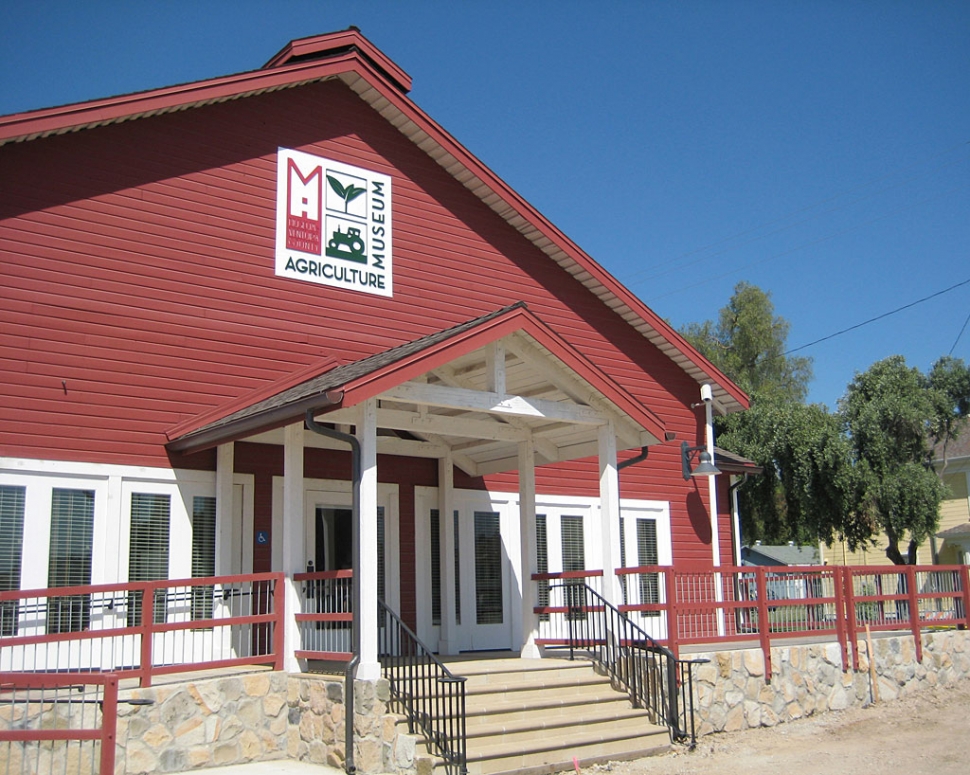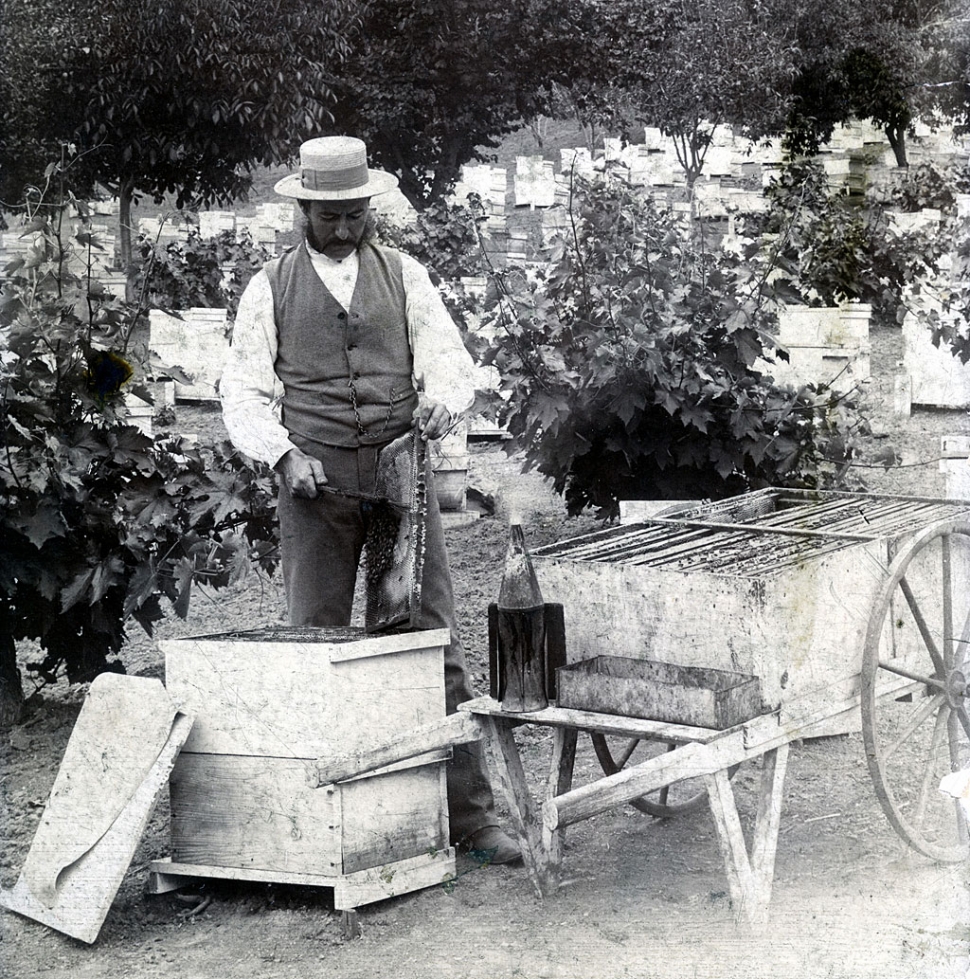Bees, Bugs & Tractors Star at Opening of Museum of Ventura County’s Agriculture Museum in Santa Paula
Come see inside our hard working beehive, let your kids climb on a vintage tractor, and learn about how food is grown, when the Museum of Ventura County's long awaited Agriculture Museum opens in Santa Paula on Sunday, September 25. Enjoy free admission for the day, docent led tours, and live music by the Lynn Mullins Pickup Band, from 11:00 a.m. to 5:00 p.m.
Insects: The Good, The Bad and The Ugly, features the museum’s own beehive and magnified images of bees taken with a scanning electron microscope by artist and photographer Rose-Lynn Fisher. The exhibit also focuses on the threat posed to farmers by the tiny but frightening Asian Citrus Psyllid insect. Eight vintage tractors, dating from 1914 to 1955, are found throughout the building, including one upon which children can sit. The machines are part of a rotating display of the museum’s nationally recognized collection of farm implements. display of the museum’s nationally recognized collection of farm implements.
Permanent exhibits using rare historical photographs and interactive elements, tell the story of Ventura County’s farming and ranching tradition. Starting with Mission times, visitors can trace the county’s evolution into one of the nation’s most productive growing regions, and learn what innovations are in store for an industry that presently employs more than 30,000 county residents.
The realization of more than 40 years of effort and dedication by supporters, the Agriculture Museum is appropriately housed in the landmark 1888 restored Mill building, at 926 Railroad Avenue, beside the railroad tracks and across from the depot in Santa Paula, California's historic downtown.
The museum is open 11:00 a.m. to 5:00 p.m., Tuesday through Sunday, with admission $4 adults, $3 seniors, $1 children 6-17, and children under 6 free. Membership in the Museum of Ventura County includes free admission to both their Agriculture Museum and the Museum of Ventura County’s primary location at 100 East Main Street in Ventura. For more information, go to www.venturamuseum.org
To receive information about the September 24 Grand Opening Celebration Fundraiser for the Agriculture Museum, please contact development@venturamuseum.org.
Frequently Asked Questions:
Q. Where is the Agriculture Museum?
A. The Agriculture Museum occupies the historic Mill building adjacent to the Southern Pacific Railroad station in downtown Santa Paula. The Mill was built in 1888 as an agricultural warehouse, and later served as a feed and grain outlet, and an antiques mall.
Q. Is the Agriculture Museum related to the Museum of Ventura County?
A. Yes. The Agriculture Museum will be operated as a satellite of the Museum of Ventura County, which has its main site in Downtown Ventura. Museum members will have membership privileges at both facilities.
Q. Does the Museum of Ventura County own the Mill?
A. No. The 12,000-square-foot building is owned by the Ventura County Transportation Commission, which invested $1.86 million in renovations to bring it up to code. The Museum of Ventura County has a 99-year lease to occupy the building at $1 a year. The museum is financially responsible for tenant improvements and all operating and maintenance costs.
Q. How will the Santa Paula and Ventura facilities differ?
A. The main museum in Ventura focuses on exhibits and programs that celebrate, preserve and interpret the art, history and culture of the entire county, the Channel Islands and the surrounding region. The Agriculture Museum will focus exclusively on the county’s agricultural heritage, telling the story of local farming and ranching from the Mission period to the present and beyond.
Q. What types of materials will be on display?
A. The heart of the Agriculture Museum’s collection is a remarkable assemblage of vintage farm equipment and tools amassed over the years by a group of longtime county residents, led by Oxnard farmer Bob Pfeiler. The collection includes tractors, blacksmith anvils, plows, grain drills, bean threshers, orchard wind machines and hand-operated nut hullers. In addition, the museum owns an impressive collection of clothing, periodicals, photographs and other unique artifacts. Containing nearly 1,000 items, the museum’s farm collection is one of the most extensive in the state and ranks as an important national collection.
Q. Will all the farm equipment in the collection be displayed?
A. Not all at one time. Tractors and other implements and tools will rotate through the main display space.
Q. What types of exhibits are planned?
A. The museum will feature both permanent and changing exhibits. Permanent exhibits will focus on broad thematic areas relevant to agriculture, including history, geography, technology, water, labor, economics, and the mechanics of farming. The exhibits will describe how Ventura County’s agricultural roots have shaped the region, describe the role agriculture continues to play in the economy, landscape and culture of the county, and examine the issues and forces that will shape the industry’s future. Many of the exhibits will be interactive, and will incorporate state-of-the-art technology.
Q. What will the first exhibitions be?
A. “Insects: The Good, the Bad and the Ugly” will include the museum’s own working beehive and explore the impact of beneficial and destructive insects, including the tiny but threatening Asian Citrus Psyllid. “Challenge and Innovation: Farming in Ventura County” and “New Directions in Agriculture,” will include rare historical photographs and eight tractors from 1914 through 1955.
Q. When will the Agriculture Museum open?
A. The museum is scheduled to open to the public on September 25, 2011.
Q. Will the Agriculture Museum be available to host community events?
A. Yes. Museum directors and staff intend the Agriculture Museum to be an important addition to Ventura County’s burgeoning cultural scene, which includes the nearby California Oil Museum, Santa Paula Art Museum and the Aviation Museum of Santa Paula. Making the facility available for public and private events will increase its value to the community while also generating revenue to help cover the museum’s operating costs.


